This is the last of a four-part blog series. Click here to read previous posts. If you’d like to receive my FREE guide that includes information and tips provided in all four blog posts, please click here.
Do you have a disaster kit? If not, make it a priority to create one right away. You never know when you’ll find yourself in a situation where you have to manage without food, water, power, internet, or the ability to head out to the store to buy what you need.
Determine the safest place possible to keep everything that is the most likely to be accessible in the event of a disaster. For example, I live in the Seattle area, where we are likely at some point to experience a major earthquake. Knowing that an earthquake could cause our home to collapse, we’ve stored our disaster kit and emergency supplies in a locked shed that is located next to our home, since it is less likely to be buried under rubble.
Be sure you store a few emergency supplies in your car, in case you are not home when disaster strikes.
Essential Supplies for Your Disaster Kit
Food and Water
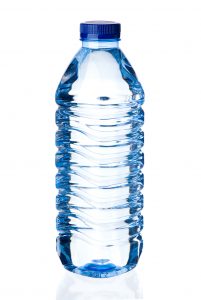 Store extra food if the time of year approaches when natural disasters typically occur. Whenever possible, bring some of this emergency food supply with you if you need to evacuate. You can’t always rely on others to provide you with food. Stores and restaurants may be closed.
Store extra food if the time of year approaches when natural disasters typically occur. Whenever possible, bring some of this emergency food supply with you if you need to evacuate. You can’t always rely on others to provide you with food. Stores and restaurants may be closed.
Aim for a supply of food that lasts you 3-5 days depending on the situation you’re in. In the case of a major weather event or other natural disaster, it may take a while for rescuers and supplies to make it to your area.
If you have a baby or pet, make sure you have plenty of supplies to keep them safe and healthy. Stock up on diapers, make sure you have a pet carrier and leash, and don’t forget about having enough food and water for everyone.
Flashlights and Batteries
 Things always seem worse in the dark, don’t they? It can be downright dangerous to move around outside–or even inside your home–without a reliable source of light. Candles will work in a pinch, but they also bring the risk of setting your home on fire. Instead, make sure your kit includes several flashlights and spare batteries. Headlamps are particularly helpful when you’re trying to move around to get stuff done.
Things always seem worse in the dark, don’t they? It can be downright dangerous to move around outside–or even inside your home–without a reliable source of light. Candles will work in a pinch, but they also bring the risk of setting your home on fire. Instead, make sure your kit includes several flashlights and spare batteries. Headlamps are particularly helpful when you’re trying to move around to get stuff done.
TIP: Keep batteries in a zippered storage bag so they don’t get wet!
First Aid Kit
 The size of your kit will depend on the size of your family. Start with a standard kit available at your local store and then add any and all medications you and your loved ones take and need. Check this kit and the rest of your disaster supplies regularly to make sure you’re prepared when you need to grab your supplies and leave quickly.
The size of your kit will depend on the size of your family. Start with a standard kit available at your local store and then add any and all medications you and your loved ones take and need. Check this kit and the rest of your disaster supplies regularly to make sure you’re prepared when you need to grab your supplies and leave quickly.
As you put together a basic emergency kit, include some first aid items so you can treat minor aches and pains if needed. Some wet wipes will help you feel cleaner when you don’t have enough water to bathe. You can purchase some ready-made First-Aid kits online at Amazon.
If you require prescription medication, stock up as much as you can ahead of time. You don’t want to risk running out.
While you’re compiling things, create a first-aid kit for your attitude. That’s right! Pull some things together that will uplift you when you’re feeling discouraged and defeated. Some things you might include:
- Thank you notes from others or compliments that others have verbalized to you. Write down uplifting comments so you can review them when you’re feeling down.
- Photos of meaningful and fun times, photos of people who raise you up and make you feel loved and cherished
- Lyrics to uplifting songs or positive quotes
Clothing and Bedding
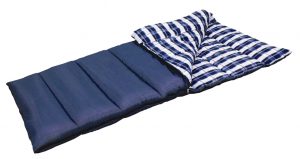 If you are going on the road, or sheltering somewhere outside your home, it’s important to have clothing and bedding or a sleeping bag to make it until you can get back home. Since many natural disasters can pop up quite quickly, include some clothing–a change of underwear, a pair of pants, a shirt, sturdy shoes–as part of your emergency kit. Remember, this isn’t your travel wardrobe or a time to make a fashion statement. This is the dire emergency stuff you have in your kit, just in case.
If you are going on the road, or sheltering somewhere outside your home, it’s important to have clothing and bedding or a sleeping bag to make it until you can get back home. Since many natural disasters can pop up quite quickly, include some clothing–a change of underwear, a pair of pants, a shirt, sturdy shoes–as part of your emergency kit. Remember, this isn’t your travel wardrobe or a time to make a fashion statement. This is the dire emergency stuff you have in your kit, just in case.
Communication
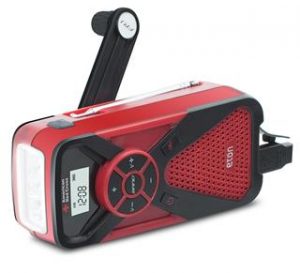 Aside from food and water, communication will be your biggest concern in an emergency event. You need to know what’s going on and you’ll want to get in touch with loved ones. Start with cell phones and chargers. They should be a high priority item in your emergency kit. You may also want to keep a backup power supply or extra batteries for your phones in the kit. Make sure they are charged, as well.
Aside from food and water, communication will be your biggest concern in an emergency event. You need to know what’s going on and you’ll want to get in touch with loved ones. Start with cell phones and chargers. They should be a high priority item in your emergency kit. You may also want to keep a backup power supply or extra batteries for your phones in the kit. Make sure they are charged, as well.
Don’t rely on just your smart phone. Get a small battery-operated radio, along with a set of spare batteries. For long-term power outages, a multi-powered emergency radio with weather alert and smart phone charger will work even when your batteries run out. This is important because you will need to hear the latest weather and government updates and news. Don’t rely on your phone and the internet as your only source for information. The network could go down or be overloaded. The radio becomes an important backup source for important information.
Keep a list of emergency contact information including printed addresses and phone numbers, as well as some old-fashioned maps. They will come in handy when the wireless system fails or your phone dies.
Miscellaneous Items
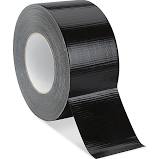 A small kit with some plastic bags, tarps, duct tape and a few basic tools will also come in handy if you need to fix a leak or broken window. In short, be prepared and ready for anything.
A small kit with some plastic bags, tarps, duct tape and a few basic tools will also come in handy if you need to fix a leak or broken window. In short, be prepared and ready for anything.
Below you will find a more detailed list of supplies you may wish to include.
Emergency Supplies Checklist
For most emergencies expect to keep at least enough food to feed each person in your household for 3-5 days.
NON-PERISHABLE FOODS & BEVERAGE
- Canned soups with pull tab
- Canned meat with pull tab
- Tuna fish sealed pouch or pull tab
- Peanut butter
- Granola bars
- Nuts
- Dried fruit
- Beef jerky
- Trail mix
- Canned vegetables with pull tab opener
- Canned fruit with pull tab opener
- Applesauce
- Pudding
- Peanut butter crackers
- Cheese crackers
- Can opener for cans that don’t have a pull tab
- Water – 1 gallon per person for day for drinking. Add more if you’ll be using it for personal hygiene. A 5-day supply for a family of 4 would equal 20 gallons of water.
OTHER ITEMS
- Lighter or matches in a waterproof container
- Extra Batteries: AA, C, D, 9V
- Small Tool Kit with Pliers, Wrench, Screwdrivers, Crowbar
- Duct Tape
- Plastic Sheeting/Tarps
- Dust Masks
- Hand-cranked or battery-operated radio and batteries
- Emergency phone that doesn’t require electricity
- Cell phone with charger
- Solar charger
- Whistle to signal for help
- Household Fire Extinguisher
- Household chlorine bleach and medicine dropper (When diluted nine parts water to one part bleach, bleach can be used as a disinfectant. Or in an emergency, you can use it to treat water by using 16 drops of regular household liquid bleach per gallon of water. Do not use scented, color safe or bleaches with added cleaners.)
- Cash (cash machines may be down, and credit cards may not work)
- Paper maps (GPS and Google Maps is not available if the Internet is down)
- Battery-operated radio and batteries
- Camp stove, BBQ grill and propane gas, or Jetboil personal cooking system
PAPER GOODS FOR MEALS: (important when there is no water to wash dishes)
- Paper plates
- Plastic cups
- Plastic utensils
- Paper towels
- Garbage bags (13 gal. for personal hygiene items and 30 gal. for normal garbage)
FIRST AID/MEDICATIONS
- First aid kit – see first aid kit checklist for items to be included
- First Aid Manual
- Prescription medication
- Over-the-Counter medication
- Glasses
- Hearing Aids
PERSONAL COMFORT / HYGIENE
- Toothbrush
- Toothpaste
- Soap
- Feminine hygiene supplies
- Razor
- Towels
- Portable toilet and toilet paper
- Blankets/Sheets, Sleeping Bag, or Emergency Survival Blanket
- Pillows
- Extra clothing & shoes appropriate for the weather, poncho
- Pet food & supplies
IMPORTANT DOCUMENTS (check out my Are You Prepared blog)
- Driver’s License
- Credit/Debit Cards
- Insurance Policies
- Bank Records
- Wills
- Passports
- Extra set of house keys and car keys
- Birth certificate
- Marriage certificate
- Social Security cards
- Deeds
- Inventory of household goods
- Immunization records
- Stocks and bonds
- Printed list with important phone numbers
If You Have Advance Notice
- Grab some cash – ATMs will not be working if there is no power
- Fill your cars with gas
- Fill your gas cans with gas
- Purchase enough water for each person to have 1 gallon of water for a minimum of 3 days
- Have enough non-perishable food for at least 3 days for each person in your household
- Purchase batteries
Don’t Wait – If you’re in an area that is prone to natural disasters, please make sure you have your emergency supplies ready at all times. Better to prepare for the worst and not need it that to be left in a bind.
Additional Resources
- Texas A&M Disaster Preparedness Evacuation Checklist
- Florida Disaster Preparedness Website
- Disaster Supply Kit
- Family Preparedness
- FEMA – Preparing for a Disaster
- Flood Preparedness guide
- Water Categories and Water Damage Classifications
- Disaster Preparedness Plan Infographic
- How To Prepare For Natural Disasters
 Don’t wait until an emergency or disaster strikes. Get prepared now! Here’s how… make a list of all that you need to do in order to be prepared. Then add these tasks to your calendar and do each one until you’ve checked everything off the list.
Don’t wait until an emergency or disaster strikes. Get prepared now! Here’s how… make a list of all that you need to do in order to be prepared. Then add these tasks to your calendar and do each one until you’ve checked everything off the list.


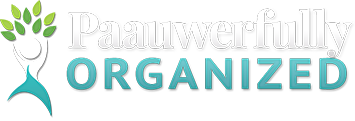





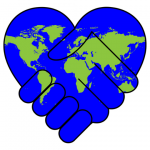
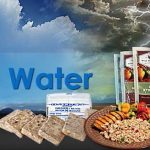

As always Kathy, you provide readers with timely advice on valuable life and career matters. Most of us have some information on these related matters, however your organization of material and additional resources takes your information to the top of the class. Thanks Again!
We have 33 of our neighbors coming over this evening for getting better acquainted as neighbors, and also to begin informal conversation about our neighborhood resources in the event of a Major Emergency.
Chris, how wonderful that you and your neighborhood are working together to prepare, in the event of an emergency. I know our local news has talked a lot about preparing for “the big one” since we live on a fault. Hopefully we will never need our emergency supplies, but if we do, we’ll be grateful that we heeded the warning and got prepared. I hope you’ll share my free guide with everyone tonight, which brings all 4 parts of this blog together in one place: https://orgcoach.net/shop/ebooks-reports/#disaster . Blessings to you as you all gather tonight to build relationships and to prepare together.